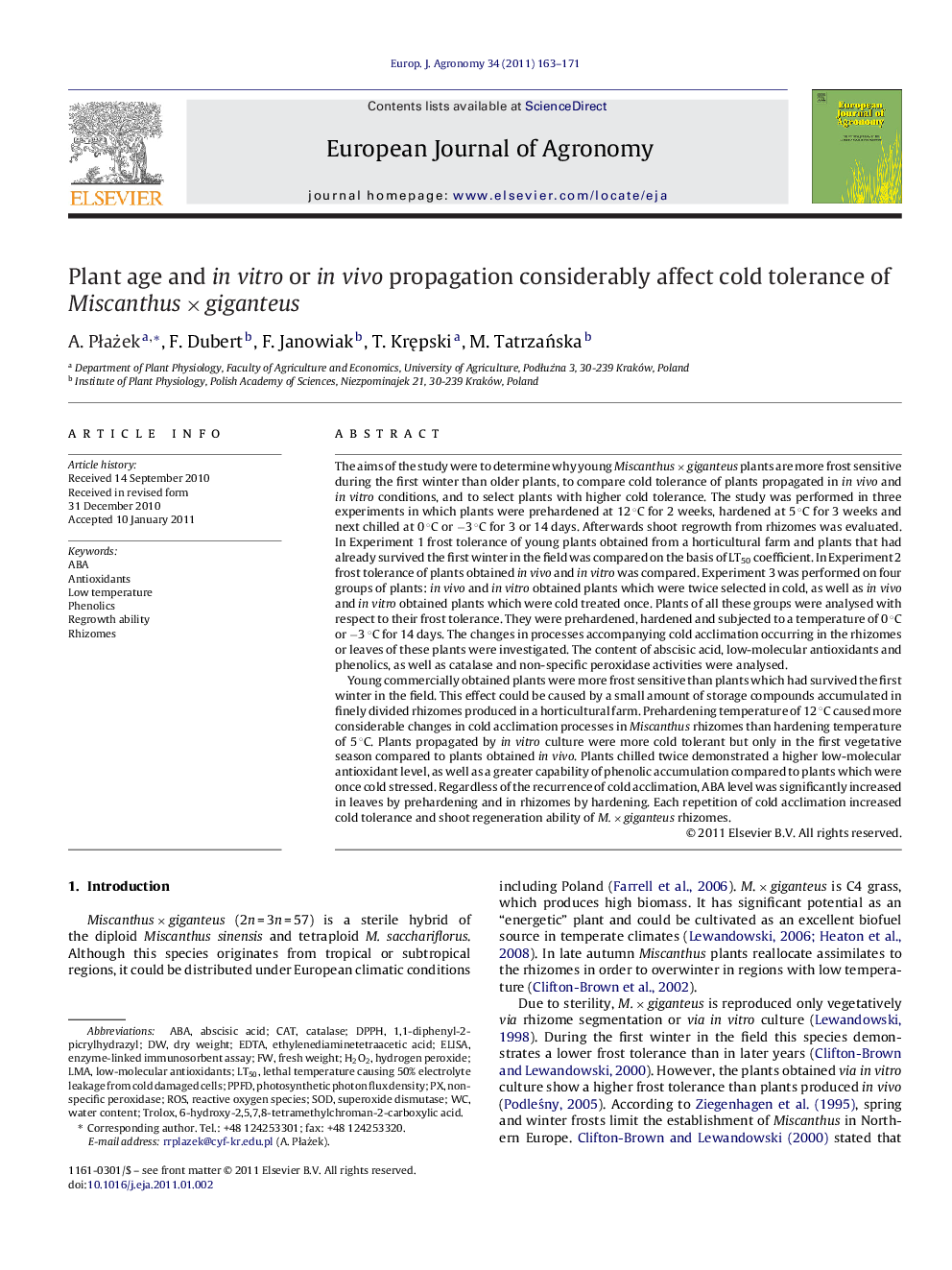| Article ID | Journal | Published Year | Pages | File Type |
|---|---|---|---|---|
| 4509266 | European Journal of Agronomy | 2011 | 9 Pages |
The aims of the study were to determine why young Miscanthus × giganteus plants are more frost sensitive during the first winter than older plants, to compare cold tolerance of plants propagated in in vivo and in vitro conditions, and to select plants with higher cold tolerance. The study was performed in three experiments in which plants were prehardened at 12 °C for 2 weeks, hardened at 5 °C for 3 weeks and next chilled at 0 °C or −3 °C for 3 or 14 days. Afterwards shoot regrowth from rhizomes was evaluated. In Experiment 1 frost tolerance of young plants obtained from a horticultural farm and plants that had already survived the first winter in the field was compared on the basis of LT50 coefficient. In Experiment 2 frost tolerance of plants obtained in vivo and in vitro was compared. Experiment 3 was performed on four groups of plants: in vivo and in vitro obtained plants which were twice selected in cold, as well as in vivo and in vitro obtained plants which were cold treated once. Plants of all these groups were analysed with respect to their frost tolerance. They were prehardened, hardened and subjected to a temperature of 0 °C or −3 °C for 14 days. The changes in processes accompanying cold acclimation occurring in the rhizomes or leaves of these plants were investigated. The content of abscisic acid, low-molecular antioxidants and phenolics, as well as catalase and non-specific peroxidase activities were analysed.Young commercially obtained plants were more frost sensitive than plants which had survived the first winter in the field. This effect could be caused by a small amount of storage compounds accumulated in finely divided rhizomes produced in a horticultural farm. Prehardening temperature of 12 °C caused more considerable changes in cold acclimation processes in Miscanthus rhizomes than hardening temperature of 5 °C. Plants propagated by in vitro culture were more cold tolerant but only in the first vegetative season compared to plants obtained in vivo. Plants chilled twice demonstrated a higher low-molecular antioxidant level, as well as a greater capability of phenolic accumulation compared to plants which were once cold stressed. Regardless of the recurrence of cold acclimation, ABA level was significantly increased in leaves by prehardening and in rhizomes by hardening. Each repetition of cold acclimation increased cold tolerance and shoot regeneration ability of M. × giganteus rhizomes.
Research highlights► Too fine division of Miscanthus rhizomes was responsible for lower frost tolerance. ► Plants propagated in vitro were more frost tolerant than obtained in vivo. ► Each repetition of cold improves frost tolerance and shoot regeneration of rhizomes. ► Hardening increases the level of low-molecular antioxidant, ABA and PX activity.
